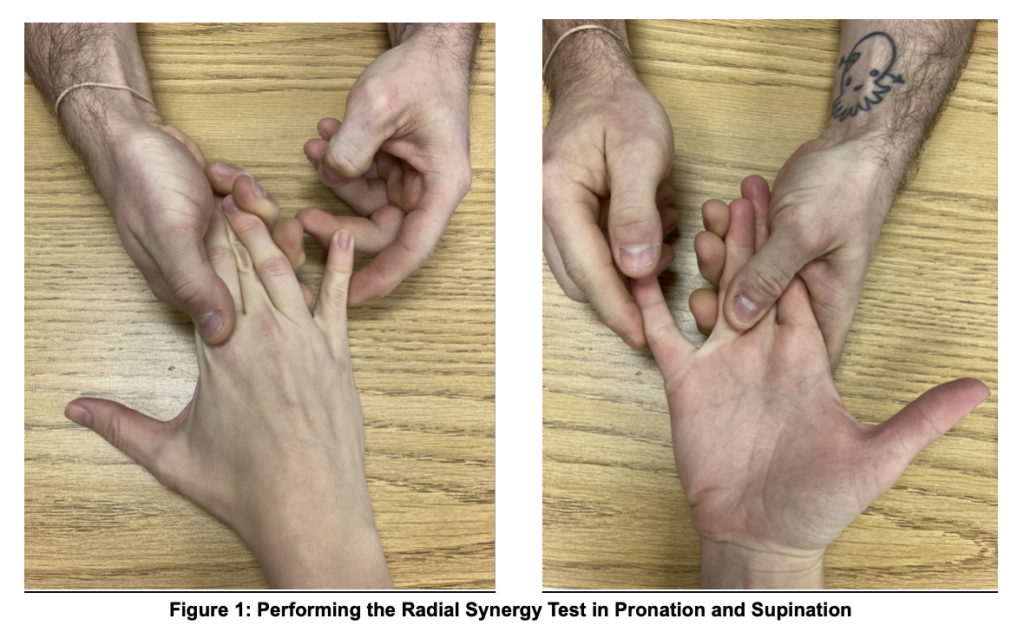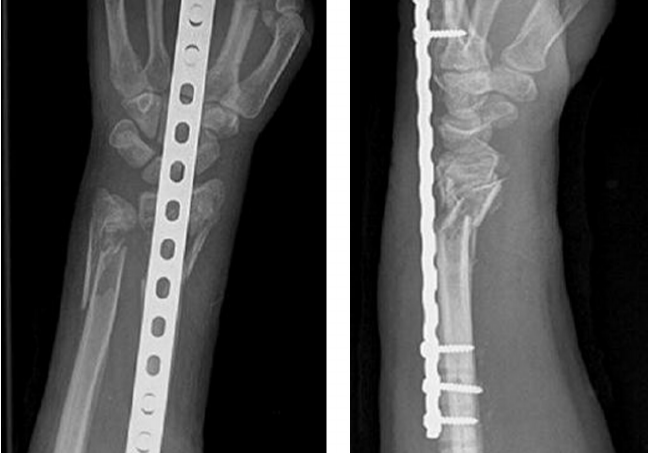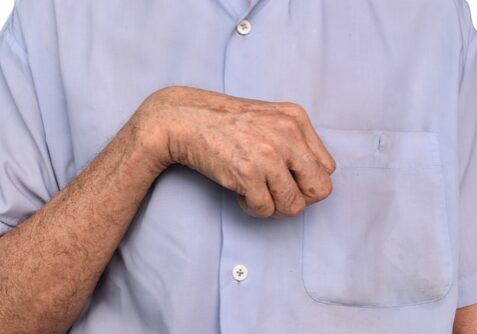Hand Therapy Article Review: The Radial Synergy Test, An Aid to Diagnose de Quervain’s Tenosynovitis
Filed under Diagnoses, Evaluation
Chihua, L., Langford, P.N., Sullivan, G.E., Langford, M.A., Hogan, C.J., & Ruland, R.T. (2021) The radial synergy test: an aid to diagnose de Quervain’s tenosynovitis. HAND. epub ahead of print;1-6. doi: 10.1177/15589447211057297
Rapid Review By: Case Peters
The Skinny:
de Quervain’s tenosynovitis is a common pathology that involves swelling and thickening of the tendon sheaths in the first dorsal compartment of the wrist. Eichoff’s test (often incorrectly referred to as Finkelstein’s test) is routinely used as part of the physical exam for de Quervain’s, but may cause pain in an asymptomatic population. This can lead to a false-positive result. Here, the authors describe a novel special test that may serve as an adjunct in the evaluation of de Quervain’s tenosynovitis, and compare it to Eichoff’s test.
In the Weeds:
Anatomical Basis
This diagnostic study comes from the same institution that developed the ECU synergy test1. The authors theorized that under the same principles, resisted abduction of the small finger would generate an isometric contraction in the first dorsal compartment of the wrist. The authors tested this by first performing the radial synergy diagnostic on themselves while utilizing EMG to sample the EPB and APL muscles. This confirmed active contractions of both muscles with the forearm in pronation and supination.
Performing the Radial Synergy Test
- Position the patient’s forearm in pronation, and stabilize the middle three digits.
- Ask the patient to abduct the small finger against resistance.
- Repeat the test in supination.
- Positive finding – pain in the first dorsal compartment in at least 1 of 2 forearm positions
- Negative finding – no pain in both forearm positions

Figure 1: Performing the Radial Synergy Test in Pronation and Supination
Validation of the Radial Synergy Test
Sensitivity was determined using a retrospective cohort of 222 patients diagnosed with de Quervain’s tenosynovitis, with data collected from 2013 – 2018. All patients included were evaluated with both Eichoff’s test and the radial synergy test. Some patients had bilateral wrist involvement, so the final number of tested extremities was 254. The diagnostic gold standard to which both tests were compared to was documented pain relief of ≥ 90% after a lidocaine/corticosteroid injection. Eichoff’s test was determined to have a sensitivity of 97%, while the radial synergy diagnostic had a sensitivity of 91%.
Specificity was determined using a prospective cohort of 48 volunteers without any pre-existing wrist pain. The radial synergy test and Eichoff’s test were performed in succession on both wrists, leading to a final total of 93 tested extremities (3 excluded for unilateral wrist pain). Eichoff’s test produced pain in 24 of the tested extremities, resulting in a specificity of 74%, while the radial synergy test had a specificity of 99%.
Bringing it home:
Eichoff’s test is classically used to aid in the diagnosis of de Quervain’s tenosynovitis, but is a passive test that generates shear stress on the APL & EPB tendons and may stress other structures not associated with the first dorsal compartment, such as the radial collateral carpal ligament.2 By comparison, the radial synergy test generates an active, synergistic contraction of the first dorsal compartment without as much shear stress. Previous existing research has reported a specificity rate in Eichoff’s test of 14%, 49%, and 89%.2,3,4 In the present study, Eichoff’s test produced a specificity of 74%. There is some concern that clinical tests with low specificity may have false-positive results, leading to unnecessary medical investigation and treatment. The advantage of the radial wrist synergy test is that it is not a passive test.
Ultimately, the special tests for de Quervain’s tenosynovitis are only part of the overall clinical picture and must be taken into consideration alongside the patient’s history, subjective report, and other clinical findings. Hand Therapists may find this test useful if a patient is referred to them with the diagnosis of de Quervain’s tenosynovitis that does not seem to match the overall clinical picture and subjective report, or they suspect other structures in the radial wrist may be involved.
A positive Eichoff’s test but a negative radial synergy test may indicate the need for a more detailed investigation of the patient’s symptoms or may reflect the progression of the tissues into a less irritable stage. The synergistic contraction may also offer another method of gradually strengthening and increasing the capacity of the tissues in the first dorsal compartment as part of the overall treatment plan.
Study rating: 2/5
Although this study is the first report of a novel test that may have immediate clinical utility, the results must be interpreted with caution. As is apparent from the supporting references, the reported psychometric properties of a diagnostic test can vary greatly depending on the testing method and sample. More research is needed to reproduce these findings, as well as examine other qualities of the radial synergy test, such as its reliability or use as part of a test-item cluster.
Supporting References
- Ruland, R.T., & Hogan, C.J. (2008) The ECU synergy test: an aid to diagnose ECU tendonitis. Journal of Hand Surgery (American Volume). 33(10); 1777-1782. doi: 10.106/j.jhsa.2008.08.018
- Goubau, J. F., Goubau, L., Van Tongel, A., Van Hoonacker, P., Kerckhove, D., & Berghs, B. (2013). The wrist hyperflexion and abduction of the thumb (WHAT) test: a more specific and sensitive test to diagnose de Quervain tenosynovitis than the Eichhoff’s Test. Journal of Hand Surgery (European Volume), 39(3), 286–292; doi:10.1177/1753193412475043
- Cheimonidou, A.Z., Lamnisos, D., Lisacek-Kiosglous, A., Chimonas, A., & Stasinopoulos, D. (2019) Validity and reliability of the finkelstein test. Trends in Medicine. 19, 1-7. doi: 10.15761/TiM.10000183
- Wu, F., Rajpura, A., & Sandher, D. (2018) Finkelstein’s test is superior to eichoff’s test in the investigation of de Quervain’s Disease. Journal of Hand and Microsurgery. 10(2); 116-118. doi: 10.1055/s-0038-1626690
1 Comments
Leave a Comment
More To Read
Outcomes of Dorsal Bridging Plates
Outcomes of Dorsal Bridging Plates Fares, A. B., Childs, B. R., Polmear, M. M., Clark, D. M., Nesti, L. J., & Dunn, J. C. (2021). Dorsal Bridge Plate for Distal Radius Fractures: A Systematic Review. The Journal of Hand Surgery. https://doi-org.methodistlibrary.idm.oclc.org/10.1016/j.jhsa.2020.11.026 The Skinny Distal radius fractures (DRF) are a common injury that we see in…
Read MoreAssessing and Improving Grip with the Squegg
Assessing and Improving Grip with the Squegg By: Megan Prather “Grip training is made fun” In hand therapy we are always looking for engaging new interventions to use with patients. The Squegg is a dynamic grip-training tool that can be used with clients both to assess grip strength and to improve strength across sessions. This…
Read MoreSplinting vs Stretching after a Stroke to treat Hand Spasticity
Splinting versus Stretching to improve hand function and reduce hand spasticity after stroke Reference: Ahmad Khan, M., & Singh, P. (2018, February). Effect of Hand Splinting versus Stretching Exercises for Reducing Spasticity and Improving Hand Function in Poststroke Hemiplegia: AComparative Interventional Study. Retrieved December 4, 2022, fromhttps://www.ijotonweb.org/article.asp?issn=0445 -7706;year=2018;volume=50;issue=4;spage=125;epage=129;aulast=Khan The Skinny: A comparative study by Khan…
Read MoreSign-up to Get Updates Straight to Your Inbox!
Sign up with us and we will send you regular blog posts on everything hand therapy, notices every time we upload new videos and tutorials, along with handout, protocols, and other useful information.





An interesting test worth validating.
This test was earlier published in English in the Dutch Hand Therapy Journal as Quervain Synergy Test.
Brandsma Wim, Schreuders Ton, Brandsma Lise (2016). De Quervain Synergy (QST) Test: A useful test in the assessment and evaluation of treatment.
Abstract: The article introduces a muscle synergy test that may be helpful in the assessment and evaluation of De Quervain tenosynovitis. Furthermore, it proposes an outline that could be helpful to grade the severity of the tenosynovitis that, following prospective studies, could be helpful in objectively grading severity and determining appropriate intervention. (12 references).
Ned T Hand Ther 2016; 25: 14-16 (See website Dutch Hand Therapy Society)